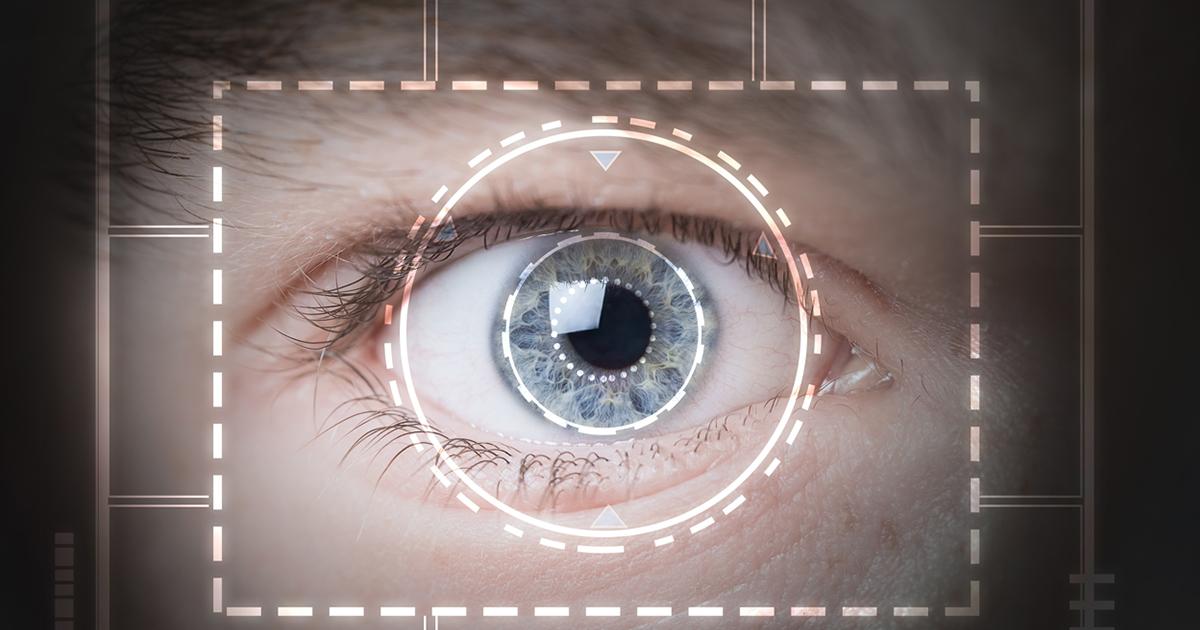Four Imaging and Diagnostic Platforms Making the Move Toward More Individualized Treatment

Imaging and diagnostics in ophthalmology are moving toward more individualized patient treatment, with quicker and more detailed diagnoses leading to improved and more specific treatment options. At a Breakfast Breakout session at OIS@ASCRS, presenters from four companies described innovations that are striving to achieve that goal.
LacriScience’s LacriPen
LacriScience is developing the LacriPen, a handheld portable ophthalmic osmometer and diagnostic instrument that can determine tear osmolarity and discern a number of biomarkers with a simple touch of the disposable one-time-use tip to the patient’s eye. Chris D. Geddes, PhD, LacriScience’s’ chief technology officer, said that to utilize the technology LacriPen employs – surface plasmon resonance – a diagnostic unit the size of a washing machine was needed before this innovation, which fits in a doctor’s pocket. He noted that the LacriPen is a platform model, and eventually there will be uses outside of ophthalmology.
John Sheppard, MD, a practitioner panelist in the breakout, explained that the point-of-service testing LacriScience is developing “allows the eye-care provider to augment clinical examination with focused laboratory data, thereby formulating a far more accurate differential diagnosis and enabling selection of the best possible treatment option.” He said LacriScience’s device has the capability to simultaneously perform multiple ocular surface tests, including a complete panel of osmolarity, inflammatory mediators, allergy antibodies, and even adenovirus, herpes virus, bacterial, fungal, and parasitic biomarkers. Dr. Sheppard added, “These capabilities will not only revolutionize economically responsible triage of ocular surface disease. They can, with similar facility, streamline incredible cost savings in primary care.”
Zeiss Integrates Biometry, IOL Calculator
Oliver Klaproth, global senior product manager, biometry, Carl Zeiss Meditec, explained the ZEISS Ocular RayTracing concept for intraocular lens (IOL) power calculation. Klaproth said that individual optical properties as measured by the ZEISS IOLMaster 700, which incorporates SWEPT Source Biometry, enable preoperative simulation of postoperative neuronal-weighted retinal image quality.
The surgeon can then use this prediction for IOL selection instead of using predicted refraction, resulting in refractive outcomes similar or better than current gold standard formulas, according to data shown (J. Cataract Refract. Surg. 2019 Mar 27 [epub]). The RayTracing concept can potentially be used for all kinds of eyes, even long, short, and post-refractive surgery eyes.
J&J and the Future of Meibography
Griffith Altmann, head of R&D for surgical instrumentation at Johnson & Johnson Vision, discussed dynamic meibomian gland imaging and the company’s LipiScan imager. He noted that evaluating the structure of the meibomian glands is critical for assessing disease severity assessment.
LipiScan offers three modes of illumination to aid in seeing all the glands. The dynamic IR illumination mode uses surface lighting that originates from more than one source, and it captures multiple images and combines them into a single image, with less glare than occurs with other methods.
The adaptive transillumination mode allows for changes to the light intensity to compensate for lid thickness variations between patients. And a dual-mode combines those two.
The future of meibography is having a normative database, quantification of disease state and progression, and tracking of individual glands over time, Altmann said.
Alcon’s Cataract Surgery ‘Ecosystem’
A lack of consistency has been a barrier to achieving improved refractive outcomes after cataract surgery, noted Seba Leoni, global head, surgical suite, Alcon. He said Alcon’s Cataract Refractive Suite minimizes variability by providing an “ecosystem” that includes diagnostics-driven image-guided planning, laser-assisted execution, and ongoing optimization. He announced Alcon has partnered with MOVU to integrate the ARGOS Swept-Source-OCT biometer technology with that of Alcon’s own image-guided platform.
Another partnership, this one with Philips Healthcare, will allow Alcon to deliver next-generation connectivity and data solutions with electronic medical records systems, intelligent surgical planning, and clinic and operating-room device integration.
The Final Word
“As we see in these presentations, imaging technology and algorithms continue to advance and provide more accurate and useful information for diagnosis and treatment,” Altmann said. “Likewise, connectivity and visualization continue to evolve, and imaging data can be readily transferred, processed, analyzed, displayed, and used in novel ways to achieve better and better clinical outcomes.”
For questions about this article, please contact Steve Lenier at steve@healthegy.com.
